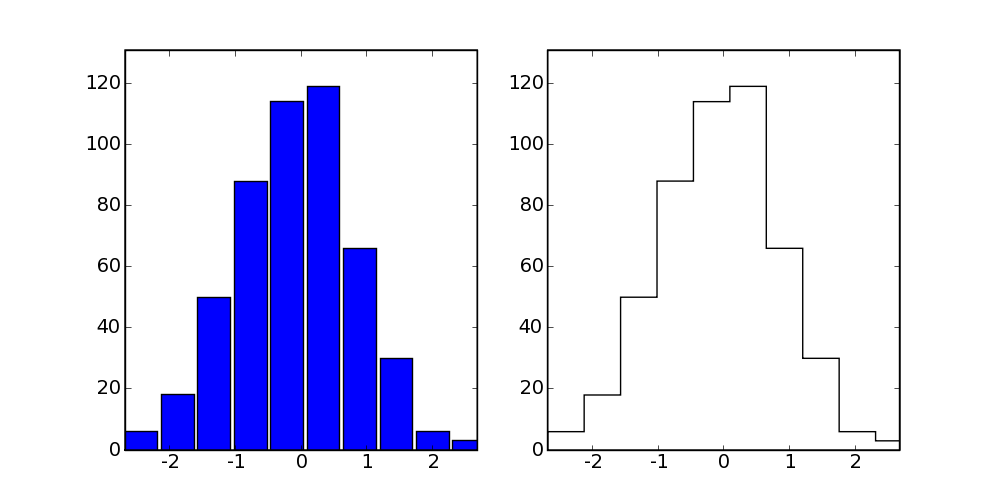Here's some template code for plotting histograms that don't look like bar charts, but instead have only outlines (like IDL creates).
First define a function that does the bulk of the heavy lifting.
1 import numpy as np
2
3 def histOutline(dataIn, *args, **kwargs):
4 (histIn, binsIn) = np.histogram(dataIn, *args, **kwargs)
5
6 stepSize = binsIn[1] - binsIn[0]
7
8 bins = np.zeros(len(binsIn)*2 + 2, dtype=np.float)
9 data = np.zeros(len(binsIn)*2 + 2, dtype=np.float)
10 for bb in range(len(binsIn)):
11 bins[2*bb + 1] = binsIn[bb]
12 bins[2*bb + 2] = binsIn[bb] + stepSize
13 if bb < len(histIn):
14 data[2*bb + 1] = histIn[bb]
15 data[2*bb + 2] = histIn[bb]
16
17 bins[0] = bins[1]
18 bins[-1] = bins[-2]
19 data[0] = 0
20 data[-1] = 0
21
22 return (bins, data)
Now we can make plots:
1 # Make some data to plot
2 data = randn(500)
3
4 figure(2, figsize=(10, 5))
5 clf()
6
7 ##########
8 #
9 # First make a normal histogram
10 #
11 ##########
12 subplot(1, 2, 1)
13 (n, bins, patches) = hist(data)
14
15 # Boundaries
16 xlo = -max(abs(bins))
17 xhi = max(abs(bins))
18 ylo = 0
19 yhi = max(n) * 1.1
20
21 axis([xlo, xhi, ylo, yhi])
22
23 ##########
24 #
25 # Now make a histogram in outline format
26 #
27 ##########
28 (bins, n) = histOutline(data)
29
30 subplot(1, 2, 2)
31 plot(bins, n, 'k-')
32 axis([xlo, xhi, ylo, yhi])
Here you can find this functionality packaged up into histOutline.py
